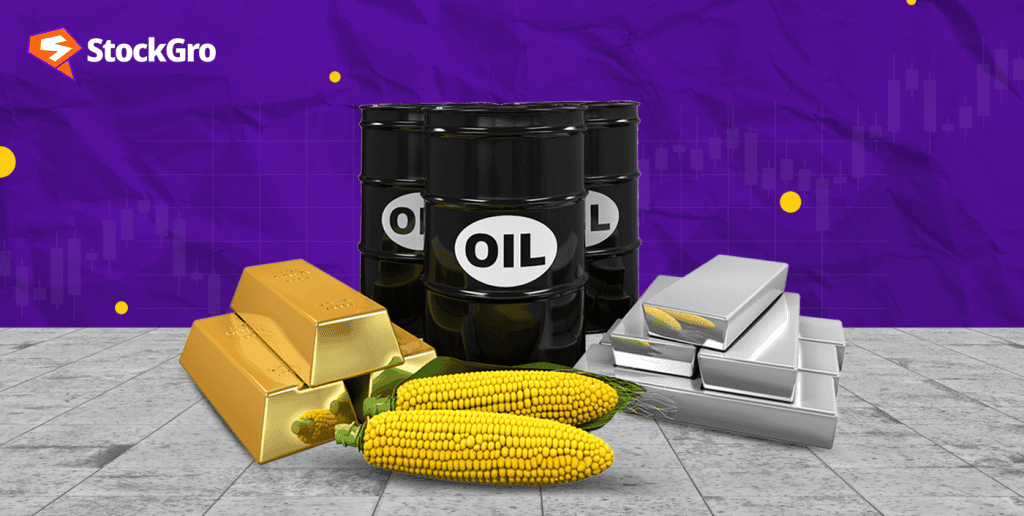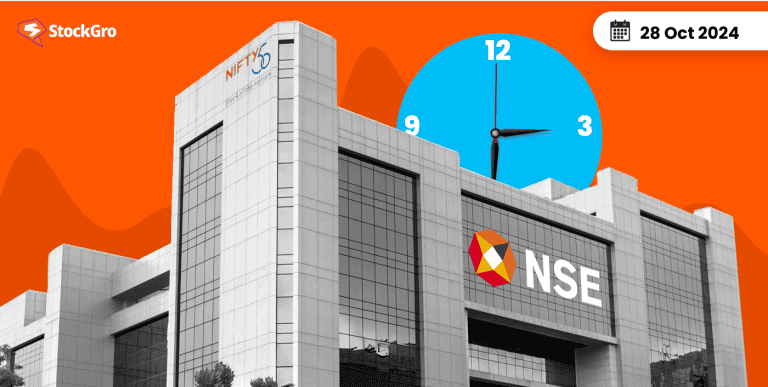
In the Indian economy, the commodity market is one of the key areas for investment and risk management. Moreover, it is complicated for new traders. It can, however, be a great investing strategy if executed properly.
In this blog, the operation of commodities markets, their economic impact, and the factors that draw traders and investors will all be covered.
What is a commodity market?
A commodity market is a place where people buy and sell physical goods like agricultural products, metals, and energy resources. Unlike stocks or bonds, commodities are things you can touch. These markets are usually divided into two main categories:
- Hard commodities: Natural resources like crude oil, gold, and metals.
- Soft commodities: Agricultural products like cotton, sugar, coffee, and wheat.
Types of commodity market in India
The traditional Indian commodity markets can be arranged under two broad categories:
- Spot market: The commodities are traded for immediate delivery.
- Futures market: The current price of commodities is set by a futures trading agreement.
The futures market in India is more well-known and provides a means of protecting against price fluctuations.
According to Statista, the nominal value of the Indian commodity market is $839.40 billion as of 2024. With a CAGR of 2.05%, the market is expected to be valued at $929.20 billion by 2029.
How does the commodity market work?
For an appreciation of how the commodity markets work, we need to introduce certain basic underlying principles of trading mechanisms running within them, their market participants, and their regulatory framework.
Market participants
With increased regulation, producers, traders, and investors now participate as the three arms of the Indian commodity market.
- Producers: Farmers, miners, and oil extractors play an important role in supplying an array of commodities.
- Traders: Traders embrace speculators, to make profits by expecting price changes, and hedgers, who use the market for hedging against price risks.
Investors have always been present in various commodities, self-invested or through any kind of financial institution, to diversify their portfolios.
Understanding commodity
Two recognized commodity exchanges in India that are used for trading are the Multi Commodity Exchange of India (MCX) and the National Commodity and Derivatives Exchange (NCDEX).
Futures trading
The core of commodity trading consists of futures contracts– a futures contract defaults to an agreement to either buy or sell a certain futures commodity on a given date sometime in the future at some specific price. Its working is as follows:
Buyer and seller
These are the parties here that make an agreement relating to one commodity. One party shall deliver it at some future point in time, and the other agrees to purchase a specified quantity thereof.
Margin requirement
This is a percentage of the total value of the contract; it is a deposit held as a guarantee for the exchange’s performance.
Price movements
Commerce prices vary greatly due to demand and supply and, to a small extent, the political situation and the economy of the country. This leads to prices falling or becoming higher due to speculative change, hence causing profit and loss in trading.
Also Read: Here is all you need to know about commodity futures
Factors determining the commodity market in India
The working of the commodity market- India is determined by several factors:
Market supply and demand determine a commodity’s pricing. Sometimes, unpleasant weather conditions impact the availability of agricultural products such as cotton or wheat, causing shortages and, ultimately, increases in price.
The global commodity market sets India’s domestic pricing. For instance, an unexpected rise in international crude oil prices would undoubtedly affect India, as it is a significant country that imports crude oil. We have seen recently, during the escalating tensions in the Middle East, that a slight rise in crude oil prices resulted in increased commodity prices in India.
Government policies, such as import duties and subsidies, have had a direct impact on commodity prices. A case in point is the reduction in import duty on gold, which directly brings the prices down within India.
Most of those commodities, like oil, are in U.S. Dollars. So this partly affects commodity prices for changes in the exchange rate of the Indian rupee with the dollar.
The role of SEBI in commodity markets
SEBI or the Securities and Exchange Board of India, is continually working towards regulating the commodity market and developing investors’ stronger and safer perceptions of it.
SEBI regulates the activities of commodity exchanges under statutory regulations, ensuring equitable conduct and limiting trading risks such as insider trading and speculation.
To know more: SEBI’s quasi-powers: Keeping India’s securities market ethical
Benefits of trading in commodity markets
The benefits of trading in the commodity market, therefore, are numerous:
Commodity trading is a great way to diversify holdings. Commodities move independently of bond equities, so market fluctuations don’t affect them.
- Protects you from inflation
In periods of inflation, demand for commodities like gold and oil soars, making them a hedge against price increases.
- Potential for profit
Proper market research and analysis will substantially profit the speculator when pricing fluctuates.
You may also like: Gold vs Equities- Which is the right investment option?
Risks in commodity trading
While the commodity market may seem to harbor considerable promise, risks emanate therein:
Price variability
Weather, world events, and geopolitical developments are some factors that impact the commodities market’s price.
Leverage risk
Futures trading involves substantial leverage, allowing the trader to take various positions, albeit with limited investments. Every form of leverage trading can lead to equally major losses.
Lack of know-how
Unfortunately, though many people jump into commodity trading without much knowledge, they later stand to lose out drastically because they do not know.
How to start commodity trading
Should one consider indulging in commodity trading, the road is easy:
- Education: First and foremost, a trader must firmly comprehend the workings of trading in commodities; learning must next take place to market trends, global happenings, and the reason behind the movement of specific commodities.
- Find a broker: Before trading in commodities, open a trading account at a broker regulated by a futures market such as MCX or NCDEX.
- Selection of the commodity: Based on the study, select the commodities that are in the spectrum of risk tolerance and goals.
- Start small: As a beginner, trade small amounts, scaling up only when confident and, more importantly, with experience.
- Engaged in market watching: Monitor closely events, news, and price movements that impact commodity pricing.
Bottomline
Knowing how commodities markets function invokes more investing opportunities, but it’s also important to know the potential issues in trading in these markets. If you know to navigate this dynamic field, it is possible to represent target gains in the Indian commodity market.
FAQs
- What do we understand about the Commodity Market?
The agricultural market includes trade in products that feed people and animals, and add background commodities such as metals and oil. It can also involve elements of a cash market, which executes spot transactions, or a futures market, which means that some contracts promise future delivery and trade today.
- What is the activity of the commodity market like in India?
In India, commodities trading is done against the NCDEX and Multi Commodity Exchanges. The forward contracts of the members envisage an obligation to buy-sell the commodity on a specified future date at a price agreed upon then or prevailing at that time. SEBI registration is mandatory if you want to trade in the Indian commodity market.
- What are the risks associated with the commodities market?
Although a risky undertaking in itself, commodities trading involves certain risks, such as the influence of unanticipated events, extreme market volatility, as well as risks related to leverage. To put it differently, these events have a “super-weak” causal connection to the price changes. For example, significant shifts in the demand and supply balance or changes in international relations will affect the prices of commodities.
- How do commodity markets work?
Commodity markets are where raw materials like oil, metals, and agricultural goods are bought and sold. Some trades happen immediately, while others are made through futures contracts, where people agree to buy or sell the goods at a set price in the future. This helps businesses manage risks and plan for price changes.
- What function does SEBI serve in the commodity market?
In order to discourage unethical behavior and a lack of openness, SEBI oversees the Indian commodities market. It keeps an eye on commodity exchanges and defends investors’ rights against market changes.

